The game of cricket is by no means a simple one. Even the minutest of changes, such as giving a bowler an additional over in a spell, or experimenting with the batting order, can have a sizeable impact, not just on the game at hand, but also possibly on the future of the players involved in the change.Throughout its history, cricket has witnessed the reinvention of several batsmen, after their position in the batting lineup was altered. Here’s a look at 5 batsmen whose careers changed after a change in batting position.
#1 Justin Langer
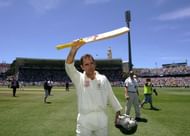
Arguably one of Australia’s best Test openers, few would believe that Justin Langer’s career started off as an eternal struggle to hold down a spot in the team. Langer, at one point in his career, was perpetually just one failure away from being dropped.
He initially walked in to bat at No.3, right from his Test debut against the West Indies at the Adelaide Oval, in 1993. Until 2001, Langer remained at the No.3 spot, until his big break, which came in the final game of the 2001 Ashes series. He replaced Michael Slater as an opening batsman at The Oval and scored a century right away.
The masterstroke shift paid off, and he was never dropped again. He averaged 52.38 and scored 14 centuries in 44 matches as an opener; previously he scored 7 centuries in 41 matches at an average of 39.04.
Langer and Hayden racked up a total of 5,655 runs over a period of 113 innings in their opening stands together, second only to the West Indians Gordon Greenidge and Desmond Haynes.Langer announced his retirement from Test cricket On 1 January 2007, after the fifth Ashes Test against England.
#2 VVS Laxman
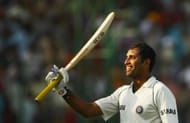
A legendary player in red ball cricket, VVS Laxman’s strokes paralleled and at times even bettered those of Sachin Tendulkar himself. Widely considered a maestro of the leg-side game, Laxman’s career didn’t start quite the way it finished; 1996-99 was a period in his international career that he would love to forget.
He stuck to opening the innings for India, despite some repeated poor showings, and was dropped from both the Test and ODI sides. Changing his batting position to No.3 worked wonders for the Hyderabad-born batsman; In the 1999–2000 season of the Ranji Trophy, he broke the record for most runs in a Ranji season, with 1415 runs, at an average of 108, in just 9 matches, which included eight hundreds – a record that still remains intact.
He was hailed as a hero for a supreme knock of 281* against Australia batting at No.3. That particular match was won by India, despite following on. This was an extremely rare feat and was largely because of the shift in the batting order. The Aussies even admitted to being clueless as to how to bowl to him.
His career went way uphill after the change from opener to a No.3 batsman. But then, he moved to the number 5 position and made it his own. On 18 August 2012, Laxman announced his retirement from international cricket.
#3 Sanath Jayasuriya
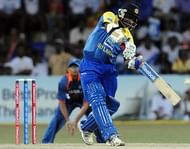
It’s difficult to digest that, for the first five years in his career, Sanath Jayasuriya was considered a bowler who could bat a bit. Any mention of him now brings a vision of a powerfully built batter cutting and slashing bowlers over point and midwicket.
Jayasuriya served Sri Lanka as a handy all-rounder and started his career at the No.6 and No.7 slot. Although he did fairly well in both Tests and ODIs, his explosive aggression came to the fore, only after he was promoted as an opener. His ruthless cuts and punches left bowlers astounded at his fearlessness.
Jayasuriya held the records for the fastest fifty (against Pakistan in 17 balls), fastest 100 (against Pakistan in 48 balls) and fastest 150 (against England in 95 balls) in ODI cricket. It took 19 years to surpass the fastest 50 with all limited overs new restrictions and other fielding restrictions.
Furthermore, he still remains the only batsman in cricket history with two consecutive scores of 150+ in ODIs. Most of his records came when he played as an opening batsman, and this change in batting position was crucial in Sri Lanka unearthing a talent that would’ve otherwise gone to waste.
#4 Steven Smith
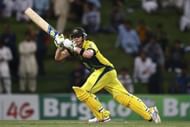
Having started his career as an effective legspinner and a promising batsman, Steven Smith may not be turning his arm over as much as he used to, but is currently sitting pretty at World No.2 in the ICC Test Rankings. One of his earliest achievements was being the leading wicket taker at the 2008 KFC 20/20 competition, with 9 wickets in his kitty.
He made his Test debut at Lords in July 2010 against Pakistan in the 2010 Test series played in England. He was selected primarily for his bowling, and batted down the order, usually at No.7 or No.8. Smith played three Tests in the 2010–11 Ashes series, this time as a batsman, at the number six spot.
During the series, Smith performed solidly, scoring two half centuries. Since the 2013 series against India, he became a regular in the Australian Test line-up and he has been played mainly as a batsman.
The 26-year old was initially criticized for his unorthodox batting method and was not expected to do well in the longer forms of the game. However, he compensates for his unusual technique with superb hand-eye coordination, and exemplary footwork. His average in the No.3 spot(where he currently bats) is a stunning 125.0 in Tests and an unbelievable 77.10 in ODIs
#5 Virender Sehwag
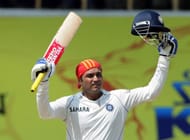
Virender Sehwag’s career has been one of simplicity, power, and sheer brilliance. He has scored at a faster rate than anyone in the history of Test cricket. With very little footwork and very high talent, the Nawab of Najafgarh has built a career terrorising bowlers all over the globe.
Sehwag maintained his position in the side from 2001 onwards, when he was played across a variety of positions, ranging from 3rd to 7th , and faced only moderate success. He burst into international fame in Sri Lanka in August 2001 when he was promoted as an opener in the tri-series also involving New Zealand.
He scored his maiden century from 69 balls against New Zealand. This performance earned him a regular spot in the ODI squad, despite it being only in the middle-order. With Ganguly's injury in the India-England ODI Series in January 2002, Sehwag received another opportunity to open the innings. He vindicated the decision, with a blitzkrieg innings of 82.
Owing to his powerful performances as opener, he was given a permanent spot at the top of the innings. He went after the bowling match after match, and ended his ODI career with a strike rate above 100, and an average of 35.05, while in Tests, he scored at a brilliant average of 53 as opener, making his promotion possibly one of the best changes made in an Indian batting lineup.
Follow IPL Auction 2025 Live Updates, News & Biddings at Sportskeeda. Get the fastest updates on Mega-Auction and cricket news
